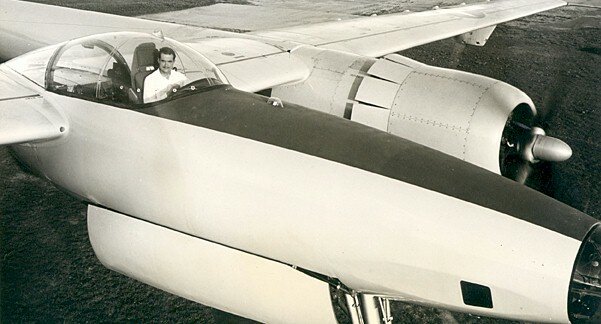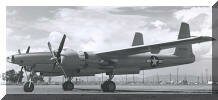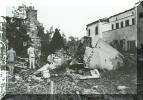

|
The airplane crash that changed his life forever The XF-11 was designed as a high-altitude photo reconnaissance aircraft capable of speeds in excess of 450 mph. Hughes selected the boon tail twin engine 3000 HP configuration with revolutionary contra-rotating propellers for extra airspeed and efficiency at high altitudes. Many believe this airplane was the forerunner of the Lockheed U-2 spy plane and that Hughes had anticipated the Cold War build up and the need for aerial surveillance and a strong stand on national defense. On July 7, 1946, Hughes had arranged a test flight demonstration and hanger party with high-ranking military, socialites and the media present with the hopes of selling this sleek aircraft to the government. Hughes test flew the XF-11 over the Los Angeles area for an hour and a half. The aircraft’s performance had exceeded his expectations, when suddenly he ran into mechanical difficulties. The governor mechanism on the right engine failed, reversing the propeller pitch. Hughes attempted every possible flight maneuver to maintain flight altitude. Hughes said; “it felt like a barn door was hanging on my right-wing". Rapidly losing altitude, Hughes tried to reach a golf course for an emergency landing. "I knew I wasn't going to make it so I propped my feet on the dash panel and went in". The crash destroyed several homes in Beverly Hills. The recovered airspeed indicator had stopped at 155 mph, an impact that would kill most men. A Marine Sergeant, William Lloyd Durkin, reached Hughes in time to pull him from the burning wreckage. For his heroic effort, Durkin received a weekly paycheck until he died. Hughes was severely injured with a broken leg, multiple cracked ribs on his left side, a dislodged heart, a fractured skull, burns and abrasions over 65% of his body. He was given a 50-50 chance to survive. Glenn Odekirk, who was flying ‘chase plane’ during the fateful test flight, was the only person other than medical personnel allowed in his room. The first thing he asked Ode was; "What happened, Ode". They soon determined the propeller fault and filed a lawsuit against the manufacturer and won. Hughes did not want to be blamed for pilot error. The military however found fault with Hughes for not following proper flight test procedures. The flight was only supposed to be for 15 minutes, with the landing gear extended, minimal fuel on board, limited maneuvers and other stipulations. But Hughes was a maverick test pilot. “It was his airplane, his money and it was his intention to “wring it out” and to see how fast she would go”, Ode said. While Hughes was recovering in the hospital, he instructed the medical staff that he was only to be given fresh squeezed orange juice prepared while he watched. He also prepared sketches for his engineers and designed what is now the modern-day hospital bed so he could turn himself because of the burns. Two months later, Howard Hughes successfully flew a second XF-11 to prove the design and flight worthiness of the airplane. He was truly a gutsy, fearless aviation pioneer. Hughes is an honorary member of the elite Aircraft Test Pilots Association. On November 2, 1947, he defied critics and successfully test flew his Hughes Flying Boat, the largest airplane ever built and his last aviation achievement. That horrific crash literally zapped the energy and life spirit from this truly ingenious and brilliant human being. His gradual use of medications to the ease the pain of his injuries became an addiction that fueled his need for seclusion and absolute privacy. Contrary to the thousands of media reports and stories about his reclusive behavior, Howard Hughes ran his empire until he broke his hip in a fall two years before his death in 1976. Howard Hughes lived to work and worked to live. Bob McCafferyXF-11 The Plane that Nearly Killed Him In His Own Words Hughes: I don't like this page at all. I think this page is misleading. I suggest that in place of the first sentence you say something like the following: With respect to all the airplanes which Hughes had designed and built - going clear back to his very first airplane, the H-1 - he had followed a rigid policy of making the flying tests himself. When questioned about this he always said, "If I have made a mistake in the design, then I'm the one who should pay for it, and I certainly would not ask somebody else to fly the plane if I were afraid to do it myself." When we move into the second sentence on page 210, I want to suggest that we delete what we have here completely, and that a scrutiny be made of my testimony with respect to this incident, which was made before the Air Force board of Inquiry. We have this somewhere. Miss Henley can probably dig it out. I'm not talking about the Senate testimony. In other words, I say that you should dig out my testimony which I made before the Board of Inquiry down here in Los Angeles . I notice here that in the later pages you have cited the Air Force conclusion that it was pilot error, etc. I read the conclusion of this Board of Inquiry very carefully, and I don't think it was quite what we have summarized here. Secondly, I think that it was a very partial and unfair conclusion, which I protested at the time I don't say that my version and testimony should prevail over the conclusion of this Board. But, likewise, I don't think it fair to say that this was an impartial board; there were very strong indications that this Board did not make a careful study of the accident. There was a great deal of evidence which was not available at the time this conclusion was reached. In fact, the Board if Inquiry was composed of a group of young officers who were jealous, in the first place. Secondly, as I say, they didn't have the facts. There was a strong doubt in the minds of the officers on this Board as to whether there had really, in fact, been a malfunctioning of the propeller. Their entire conclusion, as I say, was one which I feel was loaded with partiality, and I think that one factor influencing this report of this Board of Inquiry was that the government had an enormous amount of money in this super hydromatic propeller which was on this airplane. And the Air Force certainly did not want to see the establishment of any proof that this propeller actually was a failure or malfunctioned. Now I feel there is no question but what had an impartial Board of Inquiry met on this matter after it was thoroughly proven that this propeller was, in truth, defective, that then the result would have been quite different. Because the theory, that I should have known that this dissymmetry in the airplane's flight tendencies and attitude was caused by the propeller, and by some other structural failure. That theory is a very, very thin one, because with a dual rotation propeller and only half of the propeller in reverse - not all of it - it was very obvious that all instruments indicated the power plant and the propeller to be functioning normally. And I just don't think that a more thorough scrutiny of this matter would lead anyone to the conclusion that the pilot had any rhyme or reason or opportunity to believe that the trouble was caused by the propeller. And I think, Steve, if you want to give this fair treatment you ought to consider my testimony as being pretty damned accurate, because I was the only one there; and I think later evidence pretty well showed that it was accurate, otherwise I'm sure the Air Force never would have permitted me to fly the second F-11. Just a couple of points here to illustrate what I feel we're off the beam a little bit. You say, "He was trying to peer at the plane's under carriage when he lost control entirely." Hell, there was no loss of control. The airplane was completely under control right up to the time it hit the house. There never was a semblance of any stall or spin or anything of that kind at all. It was just a matter of a steady loss of altitude, due to the fact that this right propeller was in reverse, and the extreme throw of the controls, both the aileron and the rudder, was necessary to keep the plane from falling into a spin to the right. But there was never any slightest tendency - I wouldn't say tendency; naturally it wanted to all the time, but there was never any slightest indication that the airplane was out of control at any time. I mean its flight path and the way it contacted the houses, and the entire, well, all the facts involved, and the reports of all observers, and my report all confirmed that the airplane at no time went out of control. Incidentally, later scrutiny of the X-Rays showed that I broke 24 ribs; every single rib, not eleven. Stephen White deleted the story of the flight and crash of the XF-11 in the final article The 2nd version had a single propeller on each engine, eliminating the problematical second propeller whose malfunction caused the crash of the first XF-11. |
| Click Images to Enlarge |

|

|

|
| XF-11 | Two 3000 hp engines | Hughes flight check |

|

|

|
| Ready for takeoff | Hughes inspects landing gear | XF-11 crash site Beverly Hills |

|

|

|
| VIPs watch | Hughes crashes at 155 mph | XF-11 cruises at 450 mph |